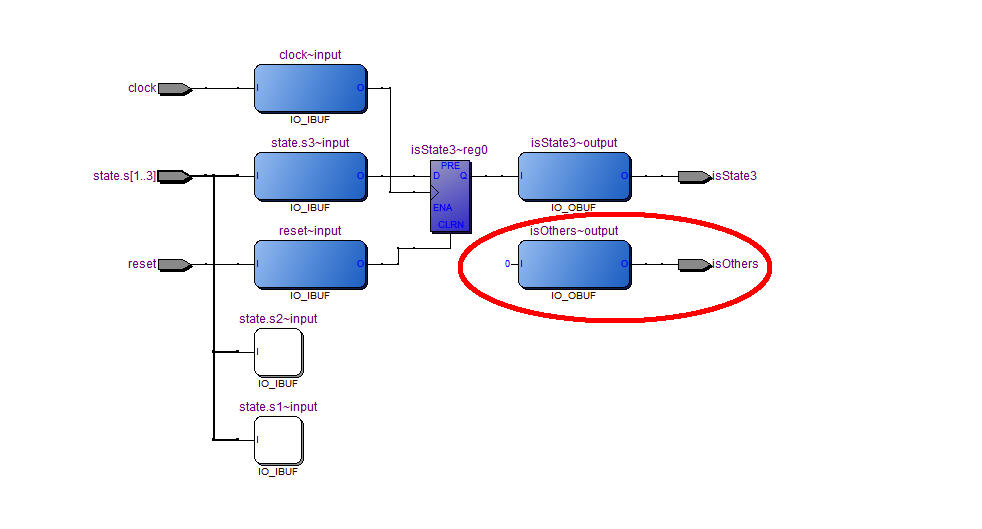I was talking to some engineering students the other day, as they were doing a VHDL lab. I noticed a VHDL case statement for state machine with named states (enumerated data type). All states were handled in their VHDL case statement, and still they put an others section in their code. I had a hard time explaining that this clause was useless. The students mumbled something about their professor eating them alive if they’d forget the others and problems with uninitialized stated and high-impedance state. As you might know, these concepts are related to the std_ulogic and std_logic type, but not to enumerated types.
The VHDL language will force you to cover all cases. If you do not account for all cases, you are required to write a fallback case (when others), and that is what usually happens if you use std_logic types, because you don’t want to enumerate all the meta-values. You need others, or your compiler will mark an error. In the case of enumerated data types, however, you can leave the others out.
type state_t is (s1, s2, s3);
case state is
when s1 =>
isState3 <= '0';
isOthers <= '0';
when s2 =>
isState3 <= '0';
isOthers <= '0';
when s3 =>
isState3 <= '1';
isOthers <= '0';
when others => -- There are no other states.
isState3 <= '0';
isOthers <= '1'; -- This NEVER happens!
end case;
In my mission to bust VHDL myths, I set up an experiment to demonstrate my case. I typed a piece of code with and without an others part in the VHDL case statement. The synthesis results are identical (as expected). To demonstrate even more clearly, I have created an output pin that would become '1' in the case of others. After synthesis, this output pin is clearly always '0'.

Conclusion: if you have not covered all possible cases you need others. If you have covered all cases, leaving out others has no effect on the synthesis (or simulation) results.
I did not try all possible settings on all possible synthesis tools. If you have found a case that proves me wrong, please let us know.
Update: Precision Synthesis uses “others”
On StackExchange , David Kessner explains that the Precision Synthesis (Mentor Graphics) does in fact use the others part to recover from illegal states.
One could argue about the desired behavior for synthesis tools: jump to the reset state, or jump to a separately declared others state. In any case, this is only useful for very specific designs, like safety critical radiation hardened systems.
Thanks David, for pointing this out!
See also
- Case statements in VHDL and (System)Verilog (blog post)
- VHDL Physical Type is not Synthesizable, or is it? (part 2) (legacy)
- VHDL Physical Type is not Synthesizable, or is it? (legacy)
- The scope of VHDL use clauses and VHDL library clauses (blog post)
- Five reasons why Emacs will always be better (opinion)